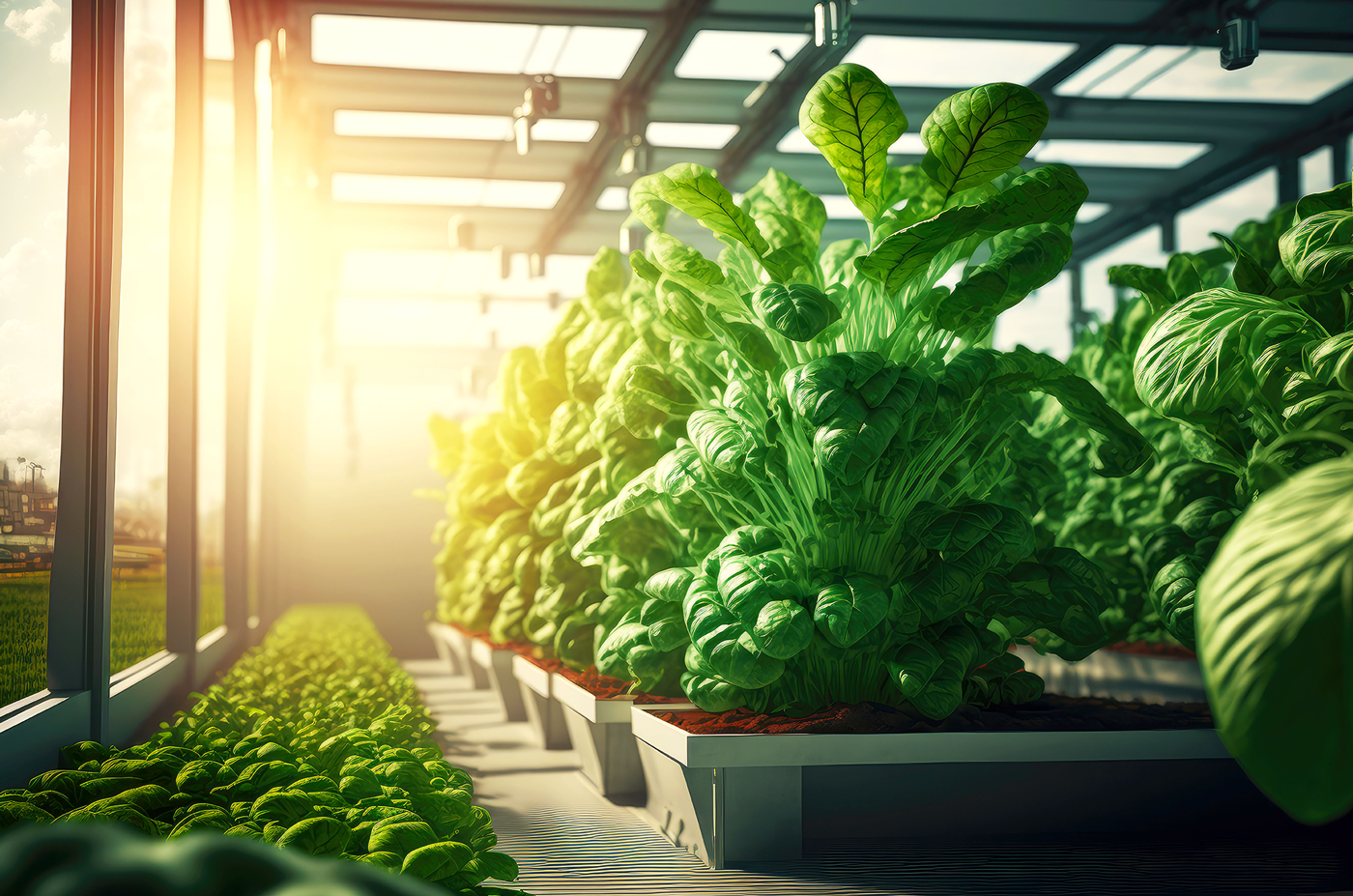
Indoor Farming Establishments Cease Operations
- foodfightadmin
- September 18, 2023
- Agriculture, Climate Change
- rsc pages, rscl
- 0 Comments
CLEBURNE, Texas – Nestled one hour away from Dallas, employees meticulously slot bunches of lettuce and other leafy vegetables into small containers in a brightly lit greenhouse. Hundreds of thousands of these containers pile high until they almost touch the roof. After a few weeks of patient care, these tender greens fill out completely, ready to be harvested, packaged, and delivered to local grocery stores in less than two days.
This modern day agricultural wonder belongs to Eden Green Technology, a rising star in the frontier of indoor farming. Their mission? To produce fresh and healthy veggies year round in “green factories.” Already owning two greenhouses, the company broke ground for two more in Cleburne. The goal is not just to produce abundant food but to protect it from the changing climate while economically utilizing natural resources like water and soil.
Of course, success isn’t guaranteed. As Eden Green sites its roots, other burgeoning indoor farms are wilting away. Growing pains in the sector included bankruptcy filings from startup darlings AeroFarms and AppHarvest, while Planted Detroit ceased operations entirely over financial difficulties.
However, Jacob Portillo, a grower with Eden Green, remains unfazed, expressing confidence in their sustainable approach, “This is the inevitable ebb and flow in any industry. But as long as we stay true to our sustainable strategies, we’ll be good.”
The essence of indoor farming, or “controlled environment agriculture,” involves various approaches. Some practice involves vertical farming, where plants occupy every inch of space from floor to ceiling, often illuminated by artificial lights and nourished by nutrient rich water. Others opt for large scale industrial greenhouses, indoor soil beds in expansive warehouses, or even certain agricultural robots.
But whether indoor farming is truly sustainable is up for debate. Critics point out that it can be an energy hog, as it often requires copious amounts of artificial light, which could make profitability elusive. Leading experts, such as plant physiologist Tom Kimmerer, argue that there are more feasible ways to deliver local food and extend growing seasons using outdoor setups. Elmwood Stock Farm, for instance, grows produce year-round using simple yet effective tools like high tunnels or hoop houses.
Shifting farming indoors may deter larger pests, but it can exacerbate issues with more inconspicuous foes like aphids, thrips, and spider mites. Even so, indoor farming firms, including Eden Green Technology, insist on the importance of stringent hygiene standards in mitigating pest problems.
Evan Lucas, an associate professor of construction management at Northern Michigan University, sees the current challenges in the sector as mere growing pains, saying, “Everyone saw the opportunity and tried to do a lot really quickly.”
However, there are rays of hope in the gloomy outlook. Eden Green‘s CEO Eddy Badrina highlights their successful experiments with sunlight use, while Plenty CEO Arama Kukutai assures stakeholders of their efficient lighting system’s profitability. Their sentiments are echoed by Matt Ryan, CEO of Soli Organic, who believes growing crops in soil indoors gives his company an upper hand over hydroponic competitors.
Demonstrating such faith, Walmart infused $400 million into Plenty as part of its plan to color its stores with Plenty’s produce. Yet, some parties, including Curt Covington, senior director of institutional business at AgAmerica Lending, remain unconvinced, arguing that profitability may be an uphill battle due to the capital intensive nature of indoor farming. Only strategic alliances, like that of Walmart and Plenty, or urban and vertical farm grants that could operate as socially conscious venture capital, may stand any chance.








